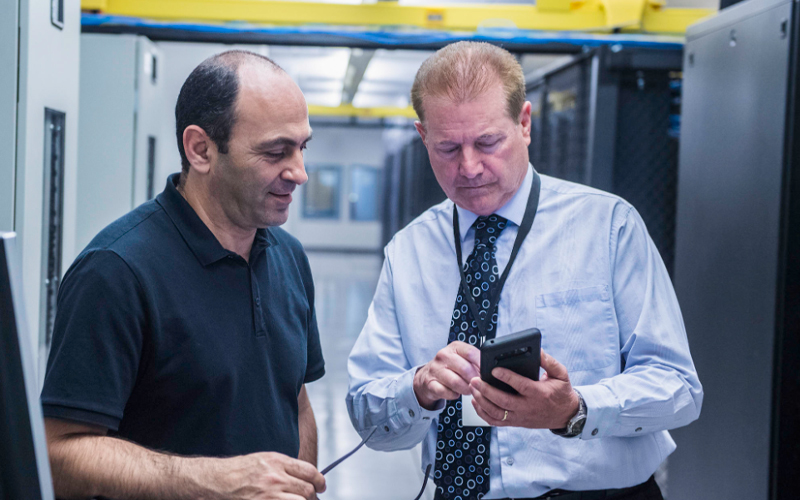Today’s smart manufacturing environment is powered by AGVs, Robots, and Cobots, and Automation which drives efficiency and scale. As factories evolve into fully autonomous “dark factories”, the margin for error shrinks dramatically. A single equipment failure can bring operations to a standstill, impacting production, delivery timelines, and profitability. Poor maintenance strategies can reduce the overall plant’s productive capacity between 5-20 percent. With unplanned maintenance already costing industrial manufacturers over $50 billion annually, maintaining asset health has evolved into a strategic priority.
This blog explores how planned asset maintenance can serve as a critical lever for manufacturers to boost uptime, extend asset life, enhance safety, and achieve operational resilience, while keeping costs in check.
The shift towards smarter maintenance strategies
Predictive maintenance, powered by smart and connected technologies, is often hailed as the gold standard. It combines data from physical assets with digital intelligence to forecast failures and reduce downtime. However, predictive maintenance can be resource-intensive, requiring significant investment in infrastructure, talent, and data models. As a result, adoption remains uneven across the industry.
In the interim, manufacturers are adopting more practical approaches that balance operational efficiency and resource constraints:
Emerging trends in maintenance management
- Outsourcing non-core activities such as asset maintenance planning, scheduling, and inventory management.
- Subcontracting maintenance execution to third-party vendors.
- Leasing assets under models like Asset-as-a-Service (AaaS), where the provider owns full maintenance responsibility.
Among these, outsourcing non-core maintenance planning and coordination is emerging as the most effective route, especially for manufacturers that already own their assets and have in-house maintenance experts but want to reduce overhead costs and operational complexity. Manufacturers prefer to outsource nonvalue added activities such as planning and scheduling of asset maintenance, collaboration with third party contractors and plant stakeholders, confirming spare parts availability as per schedule and raising requests to maintain optimum stock as per defined strategy.
Why preventive maintenance is good business
While preventive maintenance is often viewed as a cost center, the reality is far more strategic. Planned maintenance not only avoids unexpected disruptions but also delivers measurable value along with creating a safe and energy-efficient workplace for its employees across several dimensions:
- Reduced downtime and revenue loss
- Controlled cost of spare parts and labor
- Environment and sustainability impact
- Workplace safety
- Extended asset lifespan and ROI
Reactive maintenance often seems cheaper in the short-term until a breakdown brings production to a halt. Downtime leads to missed deliveries, idle labor, and lost revenue. Research shows preventive maintenance can reduce maintenance costs by 12–18%, and more importantly, keep production running smoothly.
Unplanned repairs can be expensive. Minor issues left unaddressed often snowball into major failures requiring full asset replacements. Reactive maintenance can cost up to 5x more than preventive maintenance due to emergency part orders, overtime labor, and inefficiencies. This ad-hoc maintenance often led to higher costs of spares and labor cost for repairs. Regular monitoring and servicing of equipment keep repair, spares, and labor costs under control.
Poorly maintained machines, such as with chocked/damaged filters, improper lubricated parts, mis-aligned components work harder, consume more energy, and increase emissions. Preventive maintenance ensures optimal equipment performance, cutting energy use by up to 15–20%, supporting sustainability goals and reducing operational costs.
Equipment failures can lead to injuries, fatalities, or safety incidents, from oil leaks to electrical fires. Proper maintenance helps mitigate these risks by ensuring compliance with safety standards and minimizing operational hazards, ensuring smooth functioning and a safe working environment for all.
Delayed maintenance can shorten an asset's lifespan, turning a 15-year investment into a 10-year liability. This often forces manufacturers to replace assets prematurely, increasing capital expenditure and hindering ROI. With preventive maintenance like regular servicing, lubrication, and inspection, manufacturers can protect capital investments and improve ROI by extending asset longevity.
Making maintenance proactive and scalable
As manufacturing continues its rapid shift toward autonomy and digitization, asset maintenance will be a critical differentiator between reactive operations and resilient enterprises. In this context, planned or scheduled maintenance emerges as a powerful, scalable strategy that strikes the right balance between reliability, cost-efficiency, and operational control.
Outsourcing non-core planning and coordination activities enables manufacturers to stay focused on their core competencies while ensuring that asset performance, safety, and sustainability goals are met. With structured workflows, real-time visibility, and intelligent automation, enterprises can move from reactive firefighting to proactive value creation.
How can Infosys BPM help?
At Infosys BPM, we bring deep domain expertise and capability to help manufacturers implement a comprehensive scheduled maintenance service to drive asset reliability, operational efficiency, and cost savings. Our approach includes:
- Identification of suitable use cases for outsourcing
- Clearly defined workflows and stakeholder responsibilities
- Digital control centers offer real-time visibility and process orchestration
- Intelligent automation and advanced analytics to drive performance
- Process mining to eliminate non-value-adding (NVA) activities
We enable manufacturers to focus on core operations while we manage the planning, scheduling, coordination of maintenance processes, spare-parts optimization, ensuring minimal disruption and maximum asset utilization.
Connect with us to explore how Infosys can support your maintenance transformation journey.







